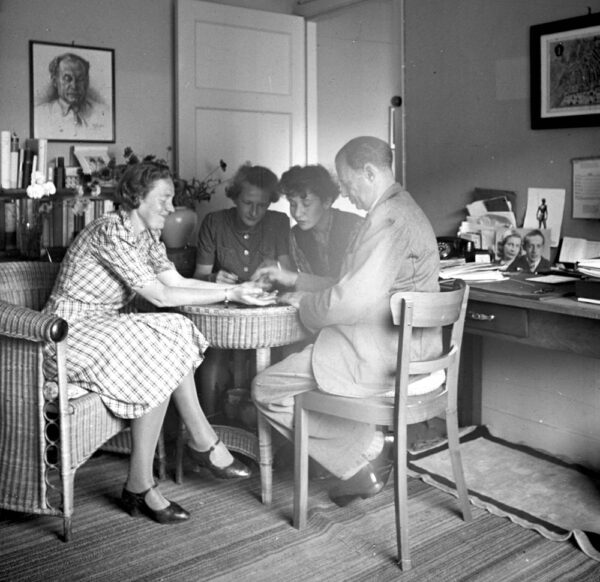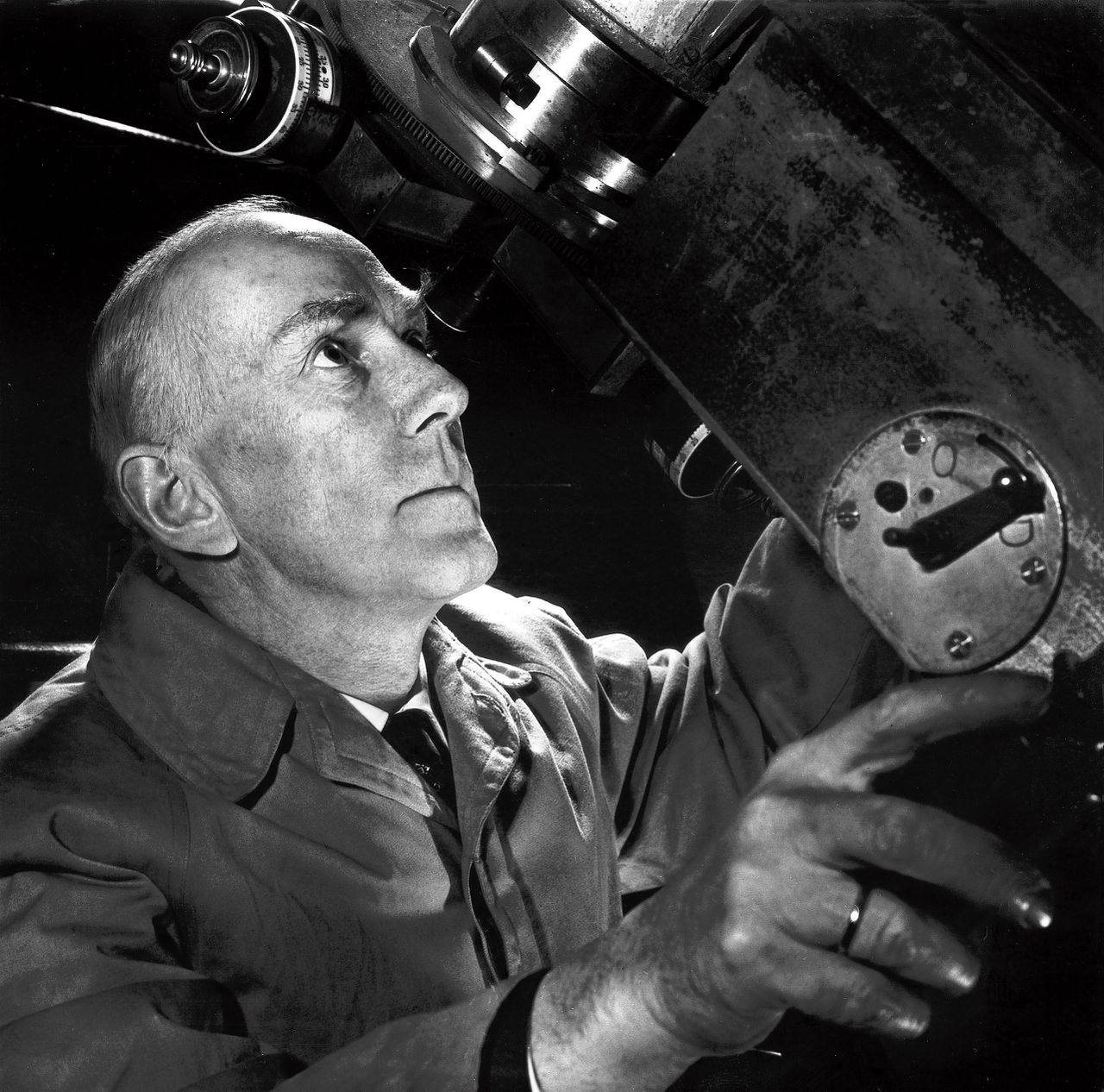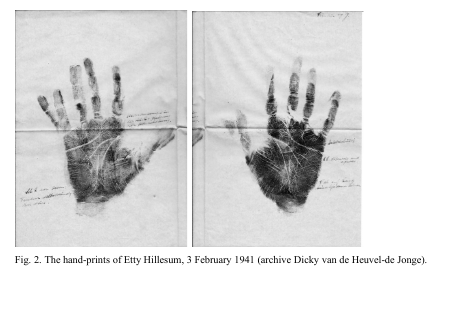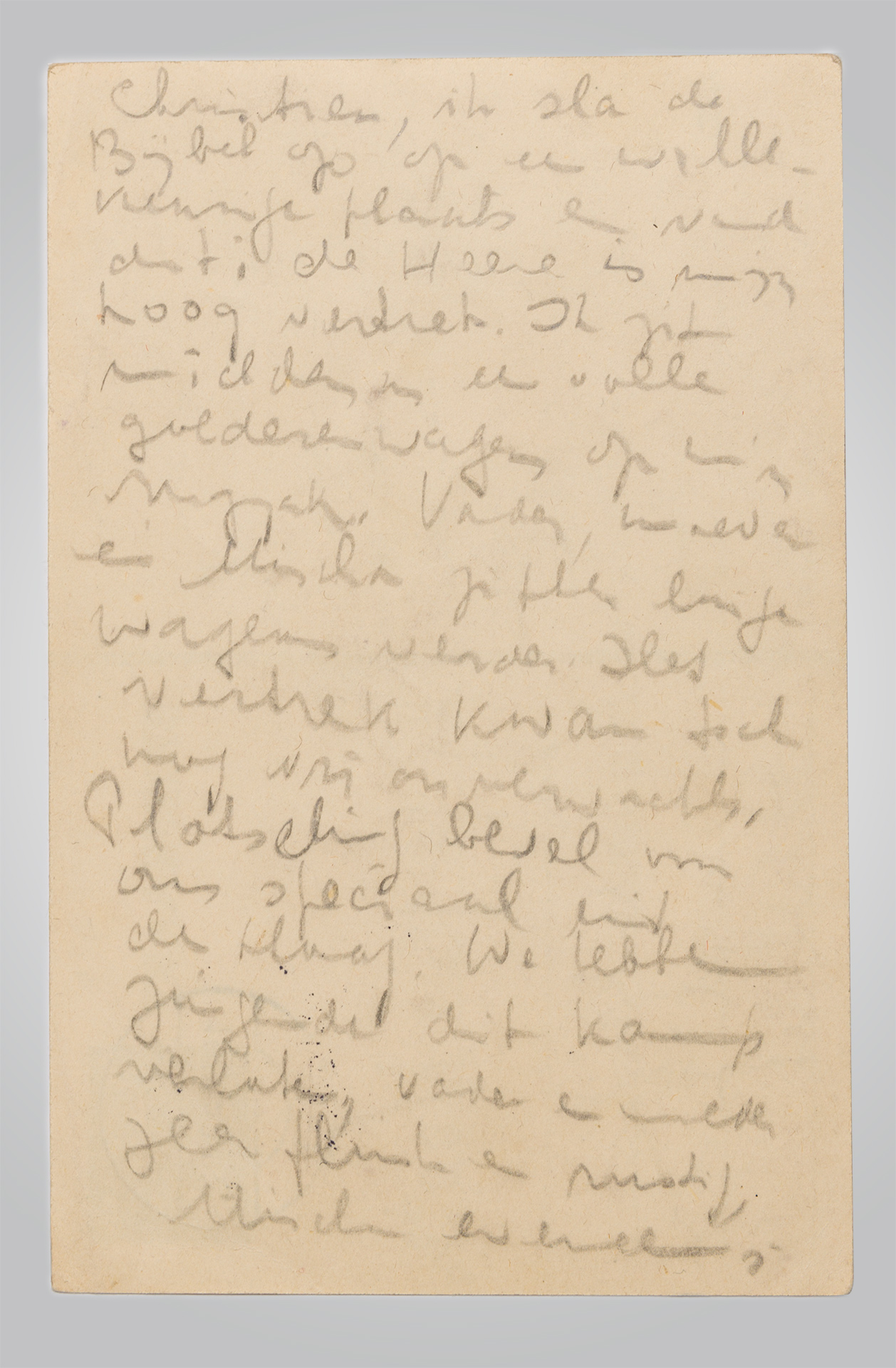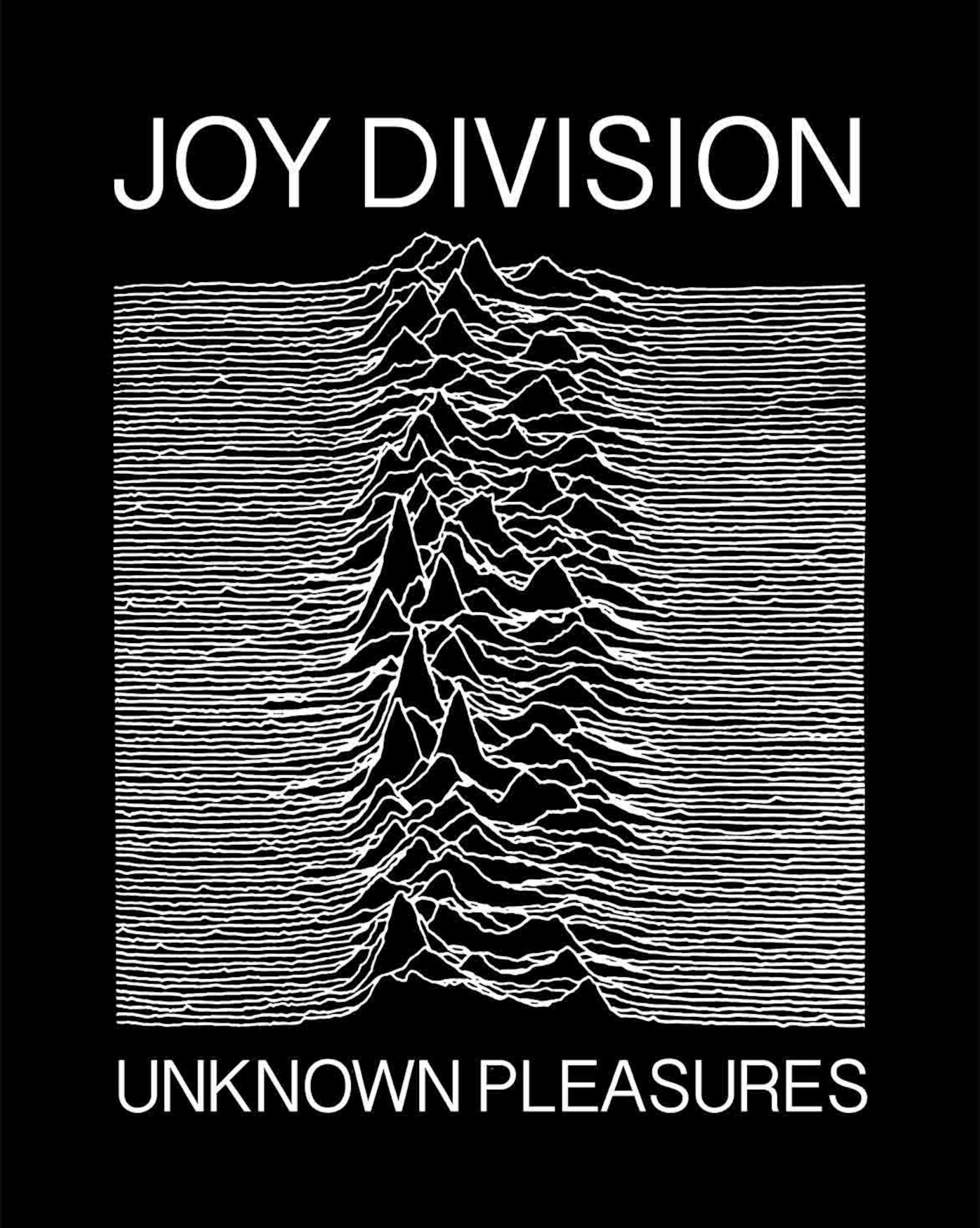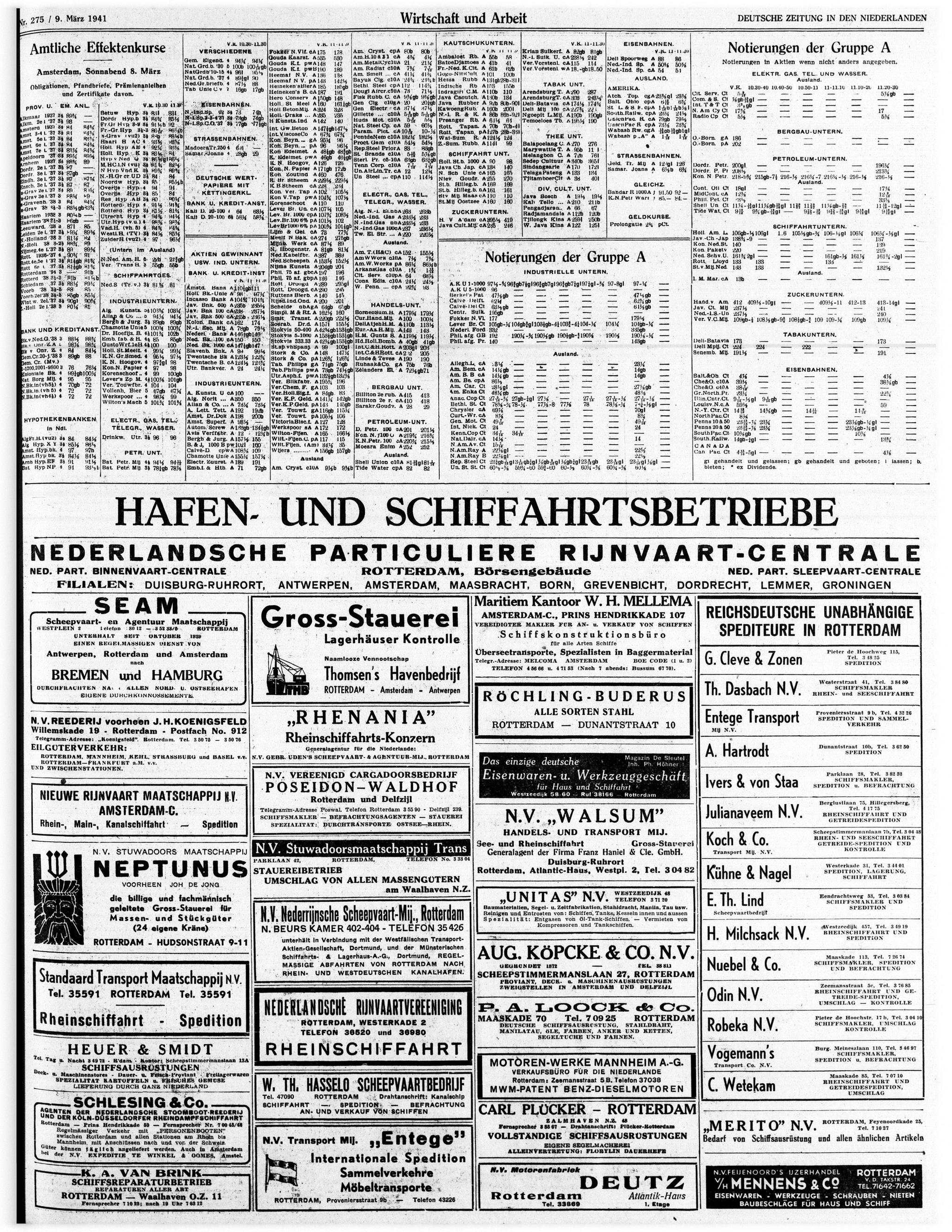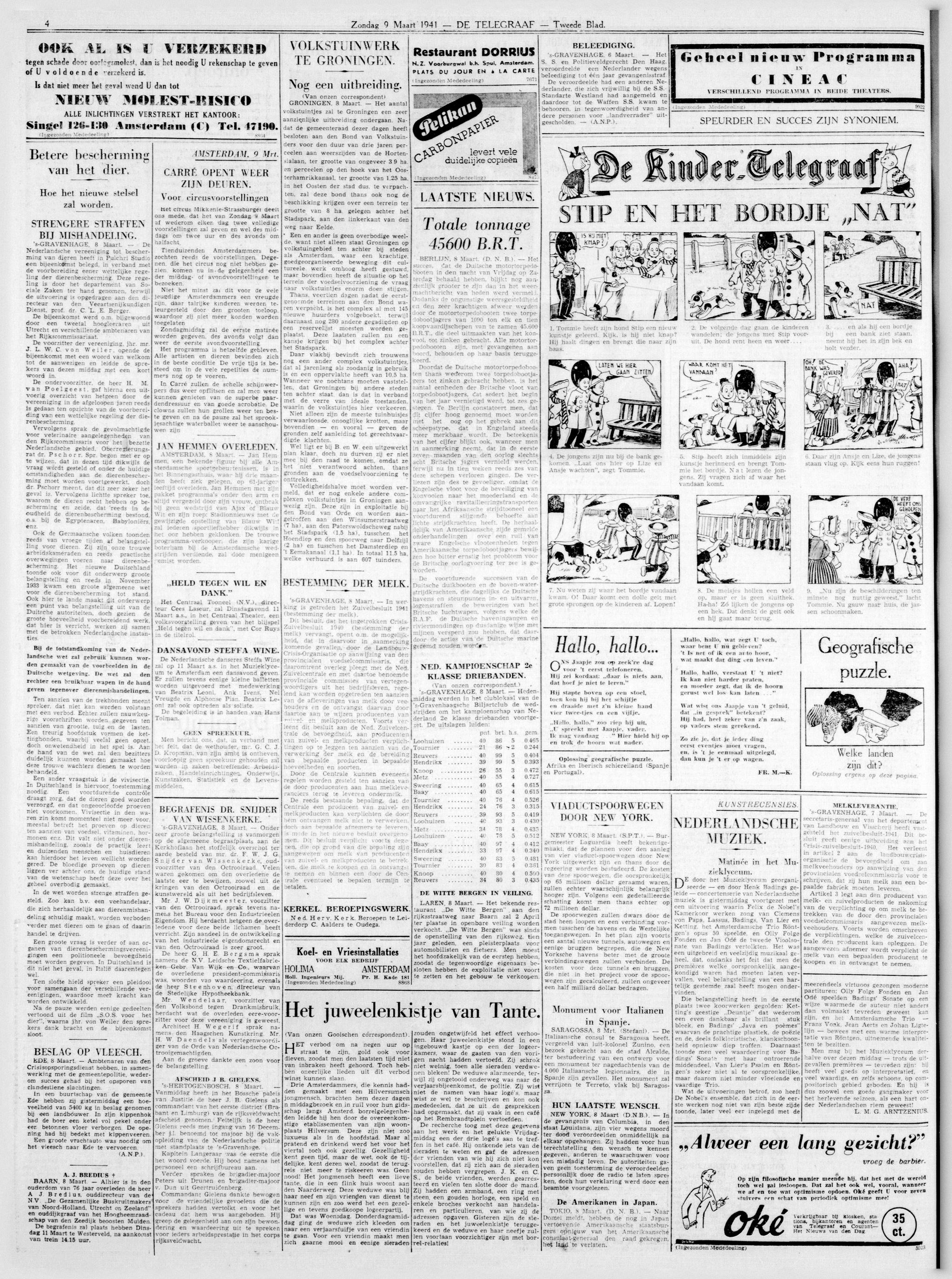
Amsterdam January 2024
I have a memory from early December 2005, in front of the entrance to the Westerbork/Duindaloo astronomical observatory. I'm with my friend Sagi Groner and a purple red VW Polo. Sagi asked me to help make possible the production of a work by Elisabeth Phillips, an American artist of whom I still know very little. The work is in two phases: the first is the observation of a radio star with the observatory's instruments, and the second consists of transforming the "live" observation of the radio source into sound and broadcasting it live to Nijmegen, where it will be re-transmitted during the exhibition opening with an FM transmitter in the city center.
The plan, therefore, is to transform the ad hoc radio-astronomical observation into audible frequencies and then to stream the sound via the internet to a server that will allow us to bring it to Nijmegen with a delay of less than a second. There, the sound will be reproduced in audio and transmitted via a FM transmitter on the whole city.
The Westerbork Observatory is the territory of two technicians who tell us anecdotes and who move with a sure hand the 10 25-meter dishes that are in the field outside to perform the observations requested by the scientists. The boss is a nice and very Dutch astronomer who acts as our chaperone. They call it the Duindaloo Observatory, I don't quite understand why. They take me for a tour of the antenna park and the story of the concentration camp comes out.
I remember talking about it with Sagi: we will take the black light of a dead star in the constellation of the swan and we will send it to the city of Marijken from Nijmegen, the girl who deceived the devil. The light of the star will remain dark because we will turn it into sound and not visible light. To bring it back to the city, we will use the empty tower that was built on a well, which is actually an "anti-well," because it puts in the air what was on the ground and closes instead of opening a place of communication (the cloister).
There is no trace of all this in the artist's work in the gallery, which only talks about the star and the radio.
As is quite normal in contemporary art, the artist is not there, nor does she know how to produce the event, something she gladly delegates to the gallery owner, who delegates to Sagi, who hires me. I manage to write a short pure-data patch to transform the data flow into sound in real time. The sound is then broadcasted to Nijmegen via a streaming server in Amsterdam. All works fine.
On the day of the observation, the star to listen to is CP1919, the first pulsar observed. Chance wants that the first Pulsar was found by Jocelyn Bell, a woman and a scientist, in Cambridge in 1967. Is mentioned in Harry Mulish book "the Discovery of Heaven" that I not not know about at that time. And this is only the start of the story...
Fast forward to 18 th January 2024. In Early November, Virginia tells me about the exhibition at the institute, "Between the lines of Etti Hillesum's diary. Due to a series of contingencies, she has a spot for me. Now I am in front of the crowd at the Italian Institute. I hung up a series of notes, some small watercolor painting, and a long line of black and white pictures. The latter are prints from the 3987 frame long super 8 mm film I have shot in Westerbork during my second trip. I never knew why I did that, was a intuition. Maybe I wanted to take a iconic memory of that empty place, of the parabolas, the ghostly feeling of the parabola, slowly moving to catch a fixed point in the sky long enough to transform the radio signal into a image or a sound. I wrote some notes, some of the facts that compose my Etti Hillesum story. I ask the audience to pick them up throwing a dice (the chance operation) and I parse through the notes picking up the corresponding fact to tell the story.
I put here below some of the facts, you will find some of the shots that document the event in this text.
At conclusion of the show I asked the audience to pass around a bass loaded bluetooth audiobox playing the star sound I recorded that day in 2005. Sounds very much like a beating hart, slightly faster, maybe scared.
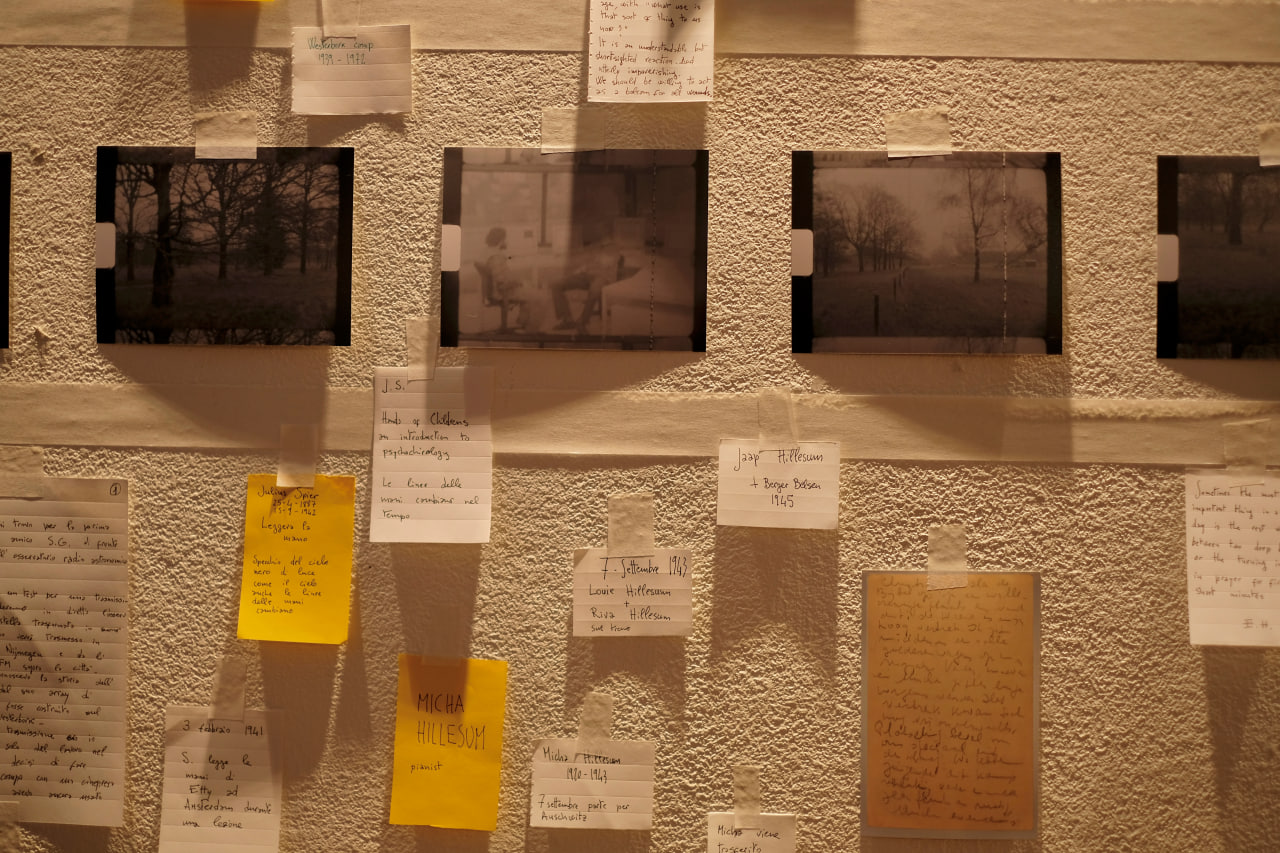 The wall installation with some of the super 8 film frames prints
The wall installation with some of the super 8 film frames prints
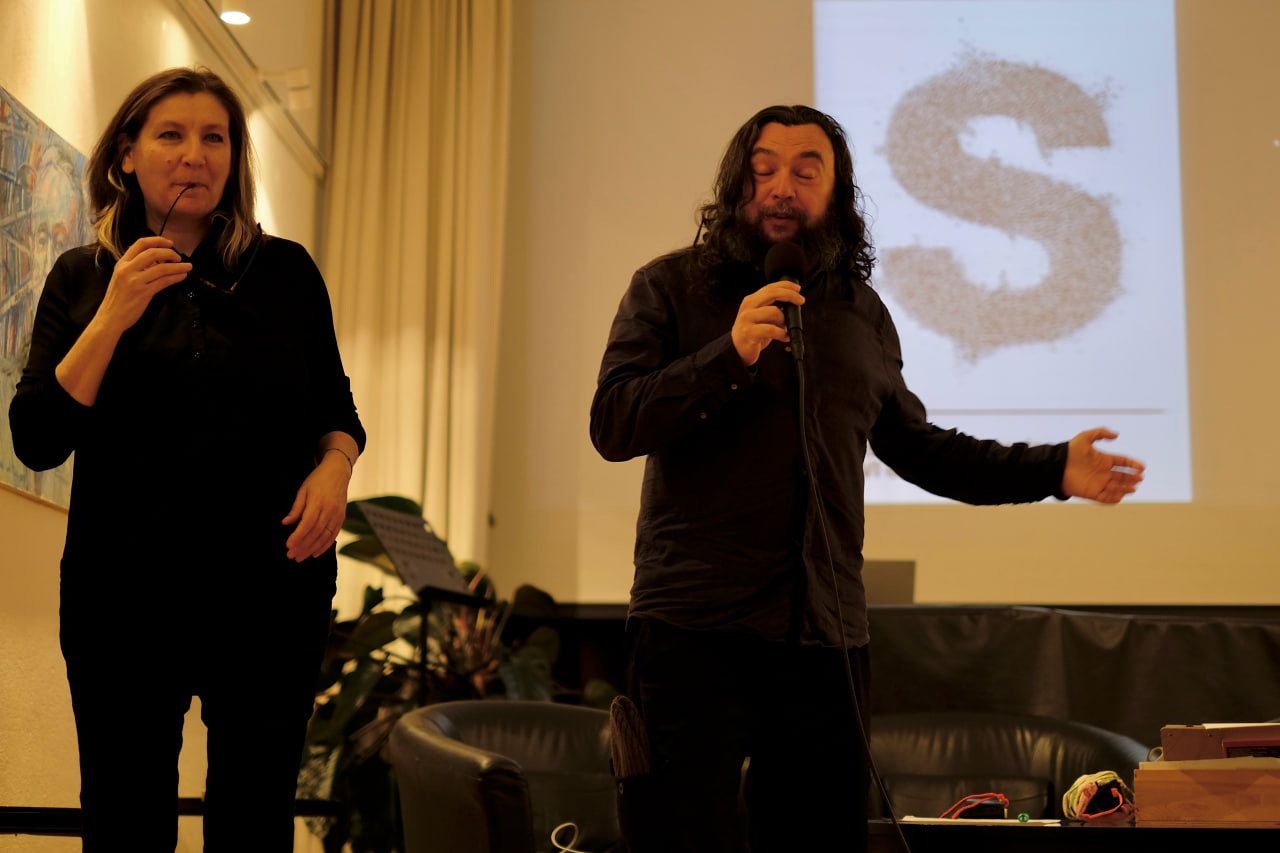 with Virginia Monteverde during the presentation
with Virginia Monteverde during the presentation
Thanks
I want to thank Virginia Monteverde, infaticable animator and organiser of Segrete for the opportunity, the kindness of the directrice of the Italian Cultural Institute of Amsterdam and all those that came to see the presentation performance and the exibition.
Facts
- Westerbork camp was active from 1939 to 1972.
- Was build by the dutch for the jews fleeing from Germany, after the occupation of the Nederlands was taken over by the germans. It was used again after the war as a prison for collaborators then as a camp to gather refugees from the former indonesian colonies. The last occupans were moluccans, was dismantled in the 70es, some sources says in the '60es'
- Actual construction started in the summer of 1954 under supervision of B.G. Hooghoudt. In November 1955 the partly completed Dwingeloo telescope was used for the first time to observe the occultation of the Crab-nebula by the moon at 75 cm wavelength (Westerhout and Seeger 1957). In April 1956 the telescope was inaugurated by Her Majesty Queen Juliana.
- Radio Astronomy in te Nederland became prominent after the war After several years negotiation led by Jan Oort to build the Benelux Cross Antenna Project, Belgium finally decided to pull out of the project. It was 1963, and never one to abandon hope, Jan Oort led the project into its new incarnation, the Westerbork Synthesis Radio Telescope (WSRT). One year later, in 1964, we were already breaking ground to build the world’s most powerful radio imager for astronomy!
- Dutch Radio Astronomy is born by using german radar antennas from the atlantic val and turn them to the sky. One of the fathers of radio astronomy was Jan Oort (1900-1992)
- The Westerbork Synthesis Radio Telescope (WSRT) was designed and built 1964, starts operations in 1968.
- Jan Oort is born in Franeker "Galaxies collide"
- Franeker holds the Eise Eisinga Planetarium (1784-1781) the universe is a clock, thou shall not be scared
- Etty Hillesum was dead within a week from her arrival in Auschwitz-Birkenau
- Julius Speer was dead the day before he was supposed to move to Westerbork, apparently of lung cancer
- the 25 november 2005 I was visiting the Westerbork radio astronomy observatory ASTRON
- I shot this super 8 my second visit, in early january 2006
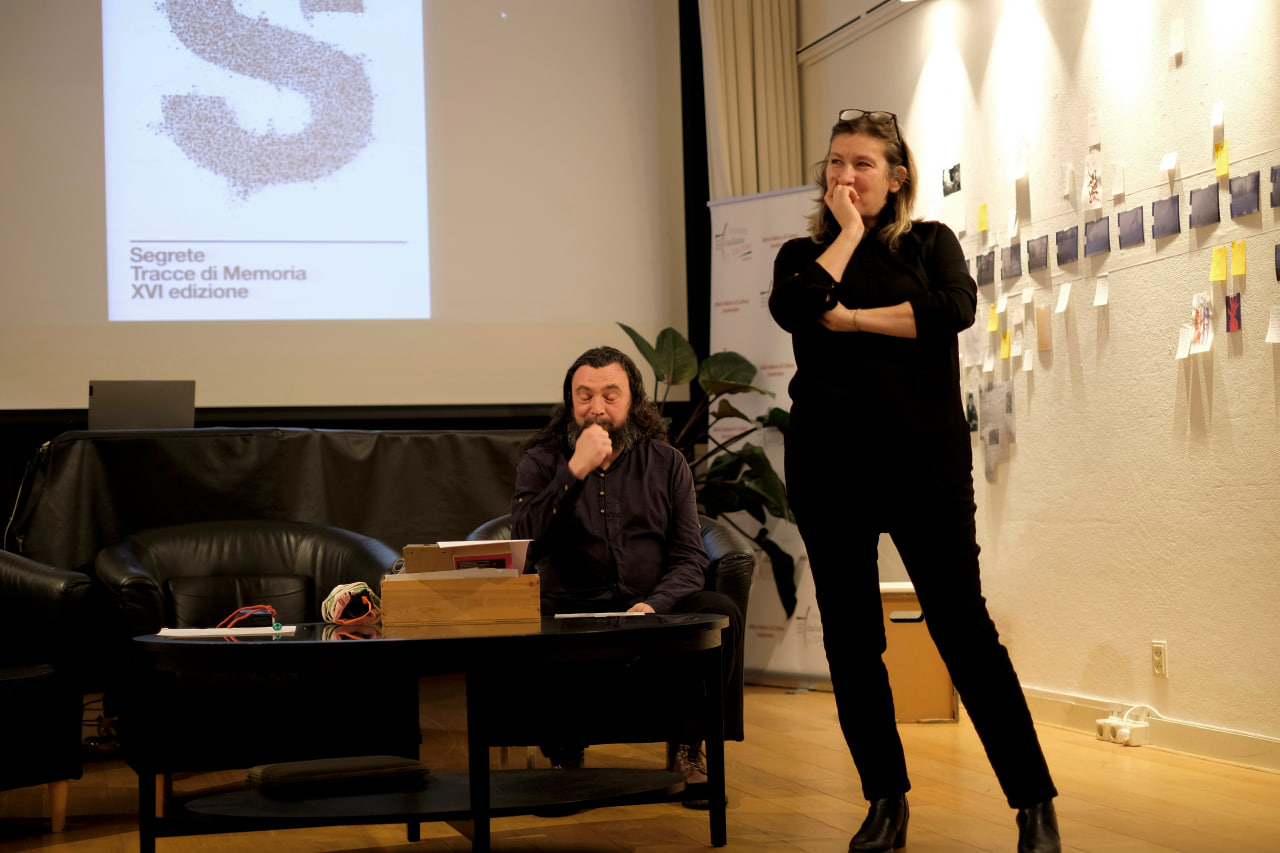
- Mischa Hillesum was a promising pianist, some recordings of his playing survived
- Mischa Hillesum as a child was cured with Electroshock
- The 7th book of Etty Diary is lost
- total number of diaries is 11
- Etty is an abbreviation of ESTER, that sounds like ASTER (star) in Latin but has a different etymology in Hebrew The three letter root of Esther in Hebrew is s-t-r (סתר), "hide, conceal". The passive infinitive is (לְהִסָּ֫תֶר), "to be hidden". I own this observation to one of the persons in the audience.
- The second brother of Etty, Jaap, was a medical doctor. He worked in the Hollandse Schouburg. Arrived in WB after his family was sent in Auschwitz. He died after liberation of Bergen Belsen out of sickness and exhaustion
- in Drenthe, close to WB they used to count the days of week "mandag, schrewdag (the day of the screams), dinstdag..."
- Speer wrote a book about the hand of childrens, observing that the hands line change with age
- Speer read the hands of Albert Einstein
- A pupil of Speer, psichologist as well, moved to Rome in the 50es and worked with Fellini
- With Sagi we had a plan to meet to do some work together again in the area of the Golan in 2024
- After October 8 events Sagi moved to Brasil with his family
- The pulsar star that was observed during the event in 2006 was CP1919
- on the plain of the camp there are 12 25 mt parabolas to observe the sky of which 10 move coordinated
- Westerbork: 101'403 persons transited, was freed 12 April 1945 by Canadians that found still 876 Inmates
- the ticket to access the camp museum costs 13.50 euros (2023)
- 250 Sinti-Roma were brought to WB and sent to Auschwitz with the first available train. Their capturing was made by Nederlands Police at the order of the Germans
